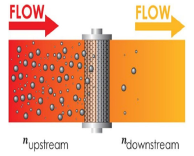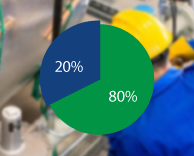Mastering Maintenance Strategies: Types, Benefits, and Impacts
Introduction:
Are your maintenance strategies working effectively for your business? Or are you left wondering if there’s a better way to optimize resources, reduce downtime, and enhance your bottom line? In this article, we’ll unveil the secrets to mastering maintenance strategies that can revolutionize your operations. From preventive maintenance to predictive analytics, you’ll gain insights into how each approach impacts productivity, efficiency, and overall performance. With this knowledge, you can make informed decisions to optimize your maintenance practices and unlock the full potential of your organization.
Types of Maintenance Strategies
1. Preventive Maintenance
Preventive maintenance involves scheduled inspections and servicing of equipment to prevent unexpected breakdowns. By conducting regular maintenance tasks, organizations can identify and resolve minor issues before they escalate into costly problems. This proactive approach ensures reliability and efficiency.
2.Reactive Maintenance
Reactive maintenance, also known as breakdown maintenance, addresses equipment issues only after they occur. While this strategy might seem cost-effective in the short term, it can lead to increased downtime and higher long-term expenses, especially for critical machinery.
3.Predictive Maintenance
Predictive maintenance leverages data analytics and monitoring technologies to anticipate equipment failures before they occur. By performing maintenance based on actual equipment conditions, organizations can reduce unnecessary repairs, optimize schedules, and maximize equipment availability.
4. Proactive Maintenance
Proactive maintenance focuses on identifying and addressing the root causes of equipment failures before they happen. This approach involves analyzing historical data, monitoring trends, and implementing measures to prevent recurring issues. Proactive maintenance aims to enhance long-term reliability and efficiency by addressing potential risks at their source.
Pros and Cons of Maintenance Strategies
1.Preventive Maintenance
Pros:
- Reduced equipment failures by identifying issues early.
- Extended asset lifespan through regular servicing.
- Enhanced productivity with fewer breakdowns.
Cons:
- High initial costs for labor, tools, and scheduling.
- Temporary operational disruptions due to scheduled downtime.
2. Reactive Maintenance
Pros:
- Simplicity: Fixes issues as they arise.
- Lower upfront costs without investment in scheduling systems.
Cons:
- Unpredictable downtime disrupts operations.
- Higher repair costs and workplace stress.
3. Predictive Maintenance
Pros:
- Optimized schedules based on real-time data.
- Reduced downtime with proactive issue detection.
- Actionable, data-driven insights for better decision-making.
Cons:
- High implementation costs for technology and expertise.
- Dependence on accurate data for reliable predictions.
4. Proactive Maintenance
Pros:
- Targets root causes, preventing recurring failures.
- Increased equipment reliability and cost savings over time.
- Long-term operational efficiency.
Cons:
- Higher upfront investment in tools and skilled personnel.
- Complex implementation requires detailed analysis.
Choosing the Right Maintenance Strategy for Your Business
Selecting the appropriate maintenance strategy requires careful consideration of your
operational needs, resource availability, and risk tolerance. For critical machinery, proactive
approaches like preventive or predictive maintenance are often the best options to ensure
consistent performance and minimize risks.
Organizations must also evaluate their workforce capabilities and technological infrastructure.
While predictive maintenance offers high efficiency, it demands significant investment in
technology and expertise. Preventive maintenance, though resource-intensive, can serve as a
middle ground for companies seeking reliability without the complexity of predictive systems.
Ultimately, the chosen strategy should align with the organization’s long-term goals and
operational priorities.
The Impact of Maintenance Strategies on Your Bottom Line
Effective maintenance strategies directly affect your organization’s bottom line. Preventive and
predictive maintenance reduces unplanned downtime and costly emergency repairs, enabling
smoother operations and higher productivity. Additionally, optimizing maintenance practices
leads to better inventory management and resource allocation, further reducing operational
costs.
Beyond cost savings, well-maintained equipment enhances customer satisfaction by ensuring timely
deliveries and high-quality outputs. This fosters customer loyalty and strengthens your brand
reputation, providing a competitive edge in the marketplace.
Implementing and Evaluating Maintenance Strategies
To implement a successful maintenance strategy:
- Develop a Plan: Outline goals, responsibilities, and schedules. Train staff to understand and execute the plan effectively.
- Leverage Technology: Use maintenance management software to track schedules, analyze performance data, and streamline operations.
- Continuous Improvement: Regularly evaluate performance metrics such as equipment uptime, repair costs, and employee productivity. Use these insights to refine your strategy.
Conclusion
Mastering maintenance strategies is key to achieving operational excellence and financial success. By understanding the pros and cons of different approaches, businesses can tailor strategies to their unique needs. Preventive and predictive maintenance minimizes downtime, enhances reliability, and contributes to a healthier bottom line. Embracing technology and fostering a culture of continuous improvement will position your organization for long-term growth and resilience.
FAQs
For further information please visit https://www.minimacsystems.com/consultancy





